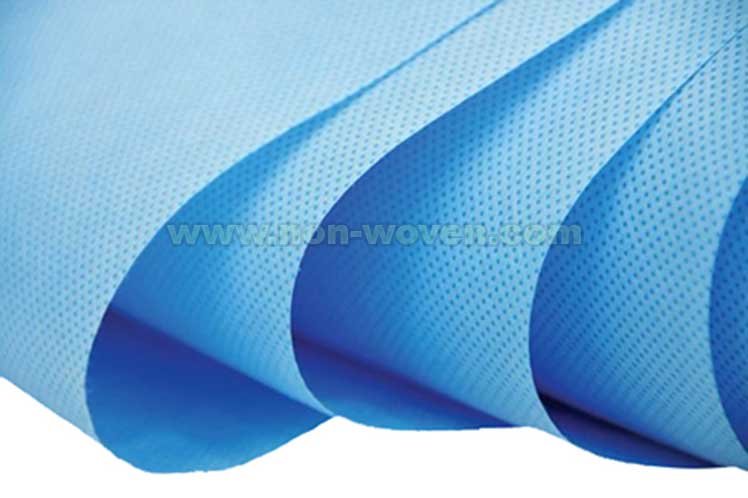outline
1. What is Woven Fabric? 2. What is a Non-Woven Fabric? 3. woven vs non woven fabrics 4. The Differences Between Woven and Non Woven Fabrics 5. The Pros and Cons of Woven and Non woven Fabrics 6. Which One Should You Choose?
Introduction
The textile industry is one of the oldest industries in the world and is classified into two main types of fabrics: woven and non-woven.
Woven fabrics are made by interlacing two sets of yarns at right angles, resulting in a strong and sturdy fabric. On the other hand, non-woven fabrics are made from short fibers that are bonded together mechanically or chemically.
So, what are the main differences between these two types of fabrics? Woven fabrics are more durable and have a higher tensile strength, while non-woven fabrics are typically cheaper to produce and have a softer feel. Non-woven fabrics are also better at resisting tears and are more absorbent than woven fabrics.
To learn more about the difference between woven and non-woven fabrics, read on!learn more(wikipedia)
1. What is Woven Fabric?
Woven fabric is a textile created by interlacing two sets of yarns at right angles. The lengthwise yarns are called the warp, and the crosswise yarns are the weft. The interlacing of the warp and weft yarns results in a strong and sturdy fabric. Woven fabrics are generally made from natural fibers, such as cotton, linen, wool, and silk. However, synthetic fibers, such as polyester and nylon, can also be used. Woven fabrics are classified according to their weave patterns, such as plain, twill, or satin. The most common type of woven fabric is plain weave, which is created by interlacing the warp and weft yarns in a simple over-under pattern. Twill weave is created by interlacing the yarns in a diagonal pattern, resulting in a fabric with distinct “twill” lines. Satin weave is created by interlacing the yarns in a way that results in a smooth, glossy surface.
2. What is a Non-Woven Fabric?
Non-woven fabric is a textile that is made from short fibers that are bonded together mechanically or chemically. Unlike woven fabric, non-woven fabric is not created by interlacing yarns. No weaving or knitting is involved in the production of non-woven fabric.
3. woven vs non woven fabrics
woven fabrics are typically made from synthetic fibers, such as polypropylene and polyester. However, natural fibers, such as cotton and wool, can also be used. Non-woven fabrics are classified according to their bonding method, such as thermally bonded, melt-blown, or spun-laced. The most common type of non-woven fabric is thermally bonded, which is created by combining fibers with a heat-activated adhesive. Melt-blown fabric is created by melting the synthetic fibers and blowing them onto a collecting screen. Spun-laced fabric is created by spraying water onto the fibers to form a bond.
4. The Differences Between Woven and Non Woven Fabrics
There are several key differences between woven and non woven fabrics:
- Woven fabrics are made by interlacing two sets of yarns at right angles, while non-woven fabrics are made from short fibers that are bonded together mechanically or chemically.
- Woven fabrics are more durable and have a higher tensile strength, while non-woven fabrics are typically cheaper to produce and have a softer feel.
- Non-woven fabrics are better at resisting tears and are more absorbent than woven fabrics.
- Woven fabrics are classified according to their weave patterns, such as plain, twill, or satin, while non-woven fabrics are classified according to their bonding method, such as thermally bonded, melt-blown, or spun-laced.
5. The Pros and Cons of Woven and Non woven Fabrics
Each type of fabric has its own set of pros and cons:
Woven Fabrics:
- Pros:
- Woven fabrics are stronger and more durable than non-woven fabrics.
- Woven fabrics have a higher tensile strength, making them ideal for use in clothing and upholstery.
- Woven fabrics are less likely to tear than non-woven fabrics.
- Cons:
- Woven fabrics can be more expensive to produce than non-woven fabrics.
- Woven fabrics can be less absorbent than non-woven fabrics.
Non-Woven Fabrics:
Pros:
- Non-woven fabrics are typically cheaper to produce than woven fabrics.
- Non-woven fabrics have a softer feel than woven fabrics.
- Non-woven fabrics are more absorbent than woven fabrics.
Cons:
- Non-woven fabrics are not as strong or durable as woven fabrics.
- Non-woven fabrics can be more difficult to work with than woven fabrics.
6. Which One Should You Choose?
The type of fabric you choose will depend on your project and budget. If you need a strong and durable fabric, then you should choose a woven fabric. If you need a cheaper and more absorbent fabric, then you should choose a non-woven fabric.

